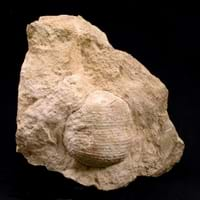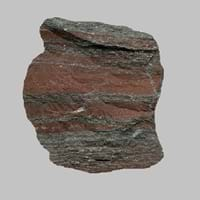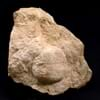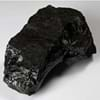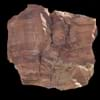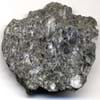Definition
Limestone is a sedimentary rock composed mostly of calcite and aragonite, which are different crystal forms of calcium carbonate
Jaspillite is an iron rich chemically formed rock which is common in banded iron formation rocks
Origin
New Zealand
Western Australia, Minnesota
Discoverer
Belsazar Hacquet
Unknown
Etymology
From lime and stone in late 14th Century
From Jaspilite (Mineral), a compact siliceous rock which resembles jasper
Class
Sedimentary Rocks
Sedimentary Rocks
Sub-Class
Durable Rock, Medium Hardness Rock
Durable Rock, Soft Rock
Group
Not Applicable
Not Applicable
Other Categories
Fine Grained Rock, Opaque Rock
Coarse Grained Rock, Opaque Rock
Texture
Clastic or Non-Clastic
Banded, Trellis
Color
Beige, Black, Blue, Brown, Cream, Gold, Green, Grey, Light Green, Light Grey, Linen, Pink, Red, Rust, Silver, White, Yellow
Red, Reddish Brown
Durability
Durable
Durable
Appearance
Rough and Banded
Banded and Glassy
Interior Uses
Decorative Aggregates, Interior Decoration
Decorative Aggregates, Interior Decoration
Exterior Uses
As Building Stone, As Facing Stone, Garden Decoration, Office Buildings
As Facing Stone, Garden Decoration, Paving Stone
Other Architectural Uses
Curbing
Curbing
Construction Industry
Cement Manufacture, Cobblestones, for Road Aggregate, Production of Glass and Ceramics, Raw material for the manufacture of mortar, Roadstone, Source of calcium
As a Flux in the Production of Steel and Pig Iron, As a Sintering Agent in Steel Industry to process Iron Ore, As Dimension Stone, Cement Manufacture, for Road Aggregate, Making natural cement, Manufacture of Magnesium and Dolomite Refractories
Medical Industry
In Chemical and Pharmaceutical Industry, Medicines and Cosmetics
Not Yet Used
Antiquity Uses
Artifacts, Monuments, Sculpture, Small Figurines
Artifacts, Jewellery, Monuments
Commercial Uses
Animal feed filler, As a Feed Additive for Livestock, Paper Industry, Raw material for manufacture of quicklime, slaked lime, Soil Conditioner, Used in aquariums, Whiting material in toothpaste, paint and paper
Creating Artwork, Jewelry
Types
Chalk, Coquina, Fossiliferous Limestone, Lithographic Limestone, Oolitic Limestone, Travertine, Tufa
Algoma-type , Lake Superior-type and Superior-type
Features
Host Rock for Lead, Stalactites and stalagmites are formed from this rock, Zinc and Copper Deposits
Is one of the oldest rock
Archaeological Significance
Famous Monuments
Acropolis of Athens in Greece, Agia Sophia in Istanbul, Turkey, Al Aqsa Mosque in Jerusalem, Angkor Wat in Cambodia, Big Ben in London, Charminar in Hyderabad, India, Chhatrapati Shivaji Terminus in Maharashtra, India, Chichen Itza in Mexico, Empire State Building in New York, Khajuraho Temples, India, Kremlin in Moscow, Louvre in Paris, France, Neuschwanstein in Bavaria, Potala Palace in Lahasa, Tibet, Wailing Wall in Jerusalem
Data Not Available
Sculpture
Used
Not Yet Used
Famous Sculptures
Ajanta Caves in Maharashtra, India, Elephanta Caves in Maharashtra, India
Not Applicable
Figurines
Used
Not Yet Used
Formation
Limestone is a sedimentary rock which is mainly made up of calcium carbonate.
Jaspillite is a type of sedimentary rock which is formed by the compaction and sedimentation of pieces of broken or weathered rocks and minerals.
Mineral Content
Calcite, Chert, Clay, Dolomite, Quartz, Sand, Silt
Coesite, Quartz, Sand
Compound Content
Aluminium Oxide, NaCl, CaO, Iron(III) Oxide, FeO, MgO
Fe, Iron(III) Oxide, Silicon Dioxide
Types of Metamorphism
Not Applicable
Not Applicable
Types of Weathering
Biological Weathering, Chemical Weathering, Mechanical Weathering
Biological Weathering, Chemical Weathering
Types of Erosion
Chemical Erosion, Coastal Erosion
Chemical Erosion, Coastal Erosion
Grain Size
Fine Grained
Large and Coarse Grained
Fracture
Splintery
Conchoidal
Porosity
Less Porous
Very Less Porous
Luster
Dull to Pearly
Earthy
Cleavage
Non-Existent
Imperfect
Toughness
1
Not Available
Specific Gravity
2.3-2.7
5.0-5.3
Transparency
Opaque
Translucent to Opaque
Density
2.3-2.7 g/cm3
0-5.7 g/cm3
Resistance
Pressure Resistant
Heat Resistant, Impact Resistant, Wear Resistant
Deposits in Eastern Continents
Asia
Brunei, India, Indonesia, Malaysia, Singapore, Thailand, Vietnam
Russia
Africa
Cameroon, Chad, Ghana, Kenya, Malawi, Sudan, Tanzania, Togo, Zambia, Zimbabwe
Not Yet Found
Europe
United Kingdom
Ukraine
Others
Not Yet Found
Not Yet Found
Deposits in Western Continents
North America
USA
Canada, USA
South America
Colombia
Brazil
Deposits in Oceania Continent
Australia
Adelaide, New Zealand, Queensland, Tonga, Victoria, Yorke Peninsula
Western Australia
All about Limestone and Jaspillite Properties
Know all about Limestone and Jaspillite properties here. All properties of rocks are important as they define the type of rock and its application. Limestone and Jaspillite belong to Sedimentary Rocks.Texture of Limestone is Clastic or Non-Clastic whereas that of Jaspillite is Banded, Trellis. Limestone appears Rough and Banded and Jaspillite appears Banded and Glassy. The luster of Limestone is dull to pearly while that of Jaspillite is earthy. Limestone is available in beige, black, blue, brown, cream, gold, green, grey, light green, light grey, linen, pink, red, rust, silver, white, yellow colors whereas Jaspillite is available in red, reddish brown colors. The commercial uses of Limestone are animal feed filler, as a feed additive for livestock, paper industry, raw material for manufacture of quicklime, slaked lime, soil conditioner, used in aquariums, whiting material in toothpaste, paint and paper and that of Jaspillite are creating artwork, jewelry.
